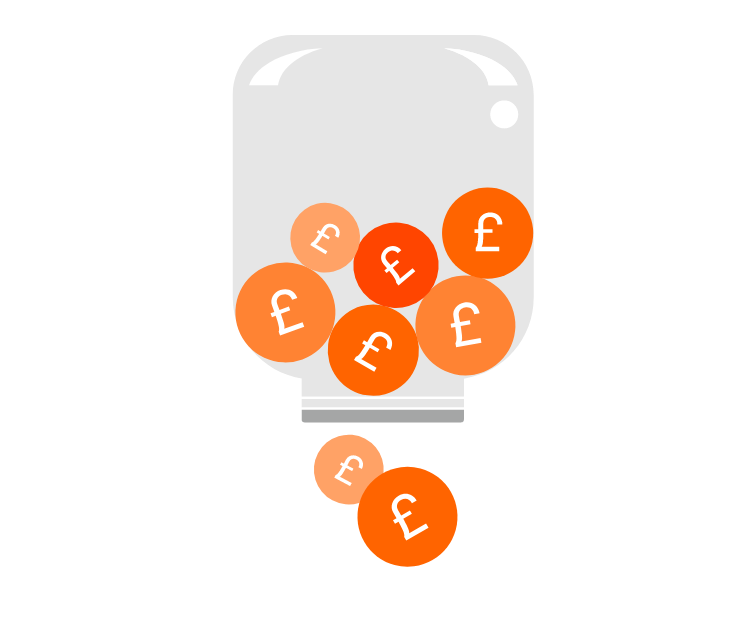Pension drawdown explained
Learn more about how pension drawdown works once you enter retirement.
If you are an ii customer looking to enter drawdown, view our ii SIPP drawdown page.

Important information on pension withdrawals
Once a request to make a withdrawal from a pension has been made it cannot be cancelled. This means Tax Treatment & Pension Allowances changes cannot be reversed. If you are unsure do not request a withdrawal. We recommend speaking to an authorised financial advisor or seeking guidance from the Government’s Pensionwise Service.
What is pension drawdown?
Pension drawdown is a flexible way of taking money out of your pension once you turn 55 (57 from 2028).
It can be considered an alternative to an annuity, which is less flexible but guarantees a fixed income.
With drawdown, your pension stays invested. The benefit is that your pot could see investment growth and higher future returns while you control how much you take from your pension. On the other hand, your pension value could fall if share prices drop.
How pension drawdown works
In drawdown, you are in control of your income. You can choose to make regular withdrawals, dip into your pot whenever you need to, or even take out the whole pension in one go.
You can also withdraw up to 25% of your pension as a tax-free lump sum, subject to a maximum of £268,275. The rest of your pension withdrawals will be taxed as income at your marginal rate.

Capped drawdown
If you went into drawdown before the wide-ranging pension reforms on 5 April 2015 and have not converted to a flexi-access drawdown, then you will be in capped drawdown.
This means you are subject to a limit on the maximum amount you can take as income from your pension pot.
This capped drawdown limit, set by the Government Actuary’s Department (GAD), is roughly 150% of the annual income that a basic annuity would give you. The limit is reviewed every three years, and then annually after you turn 75.
You can convert from capped drawdown into flexi-access drawdown. However, you will lose the benefit of a standard annual contribution allowance (up to £60,000), and will be subject to the Money Purchase Annual Allowance (MPAA) of the lower of £10,000 or your annual income.
.
Flexi-access drawdown
Flexi-access drawdown replaced flexible drawdown in April 2015, and since then has been available on all new drawdown products.
Flexi-access allows you to withdraw you pension savings whenever you need to while keeping the rest of your pot invested.
Drawdown pros and cons
Pros:
- Your money could continue to increase in value while invested
- You take whatever level of income you need, when you need it
- You can manage your annual tax liability
- Your pension can be passed on in death, normally free of inheritance tax (until April 2027)
Cons:
- You could run out of money
- Your pension value could fall if share prices fall
How much tax will you pay in drawdown?
The first 25% of your pension pot can be taken tax-free, up to a maximum of £268,275. This can be as a lump sum or smaller withdrawals. The rest of your pension will be subject to normal income tax rates:
The first £12,570 is tax-free.
- 20% tax on the next £37,700 above this.
- 40% tax on everything between £50,270 and £125,140
- 45% tax on everything above £125,140.
These figures apply to income tax in England, Wales and Northern Ireland and have been frozen until April 2028. Income taxes in Scotland are different.
You won't have to pay any National Insurance on your pension income.
Tax relief and the Money Purchase Annual Allowance (MPAA)
After you start taking taxable income from your pension, you are still allowed to make contributions, but the maximum amount you can pay in and claim tax relief on reduces to the lower of £10,000 and your annual income.
This is known as the Money Purchase Annual Allowance and is normally triggered when you start taking taxable benefits from your pension. It’s not triggered if you only take your tax-free cash.
Emergency tax
When you start taking income from your pension, your provider will give you a tax code. If they do not, you may be charged a ‘Month 1’ tax, or an emergency tax, which can be quite high.
You will be able to claim this money back from HMRC directly – or, if taking regular income, this will correct itself once HMRC provide an up-to-date tax code.
What happens to your pension drawdown plan when you die?
In the past, pensions used to be taxed 55% before being passed on to your beneficiaries. Thankfully, this has been reformed.
Under the age of 75
If you die under the age of 75, there is zero tax to pay on your remaining pension when taken out as income. If it is taken as a lump sum it will be tax-free subject to your remaining Lump Sum and Death Benefit Allowance (LSDBA). Any lump sum death benefits paid from funds that were crystallised before 6th April 2024 will not be tested against the LSDBA, since they will have already been tested against the old Lifetime Allowance (LTA). Learn more about the new lump sum allowances.
Currently pensions can be passed on free of inheritance tax. However, from April 2027, pensions will form part of your estate for IHT purposes.
Over the age of 75
If you die over the age of 75, your beneficiaries will pay tax at their marginal rate of income tax, whether they chose to take the pension as income or as a lump sum.
Recent reform allows you to leave your pension to anybody you choose. It is important that you complete your pension provider’s ‘expression of wish’ form to note who you would like to inherit your pension.
- Learn more about Income Drawdown Death Benefits.
How can Pension Wise help?
If you have a defined contribution pension scheme and are 50 or over, then you can access free, impartial guidance on your pension options by booking a face to face or telephone appointment with Pension Wise, a service from MoneyHelper.
If you are under 50, you can still access free, impartial help and information about your pensions from MoneyHelper.

Pension drawdown FAQs
Important information: The ii SIPP is for people who want to make their own decisions when investing for retirement. As investment values can go down as well as up, you may end up with a retirement fund that’s worth less than what you invested. Usually, you won’t be able to withdraw your money until age 55 (57 from 2028). Before transferring your pension, check if you’ll be charged any exit fees and make sure you don't lose any valuable benefits such as guaranteed annuity rates, lower protected pension age or matching employer contributions. If you’re unsure about opening a SIPP or transferring your pension(s), please speak to an authorised financial adviser.